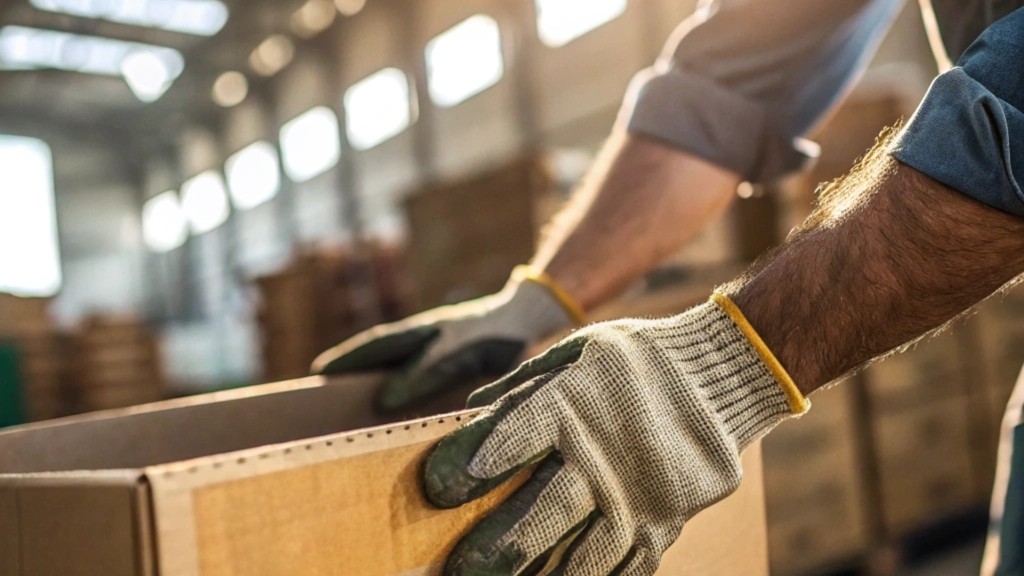
Every workplace has its own unique hazards. Without proper protection, minor injuries can lead to major setbacks. Gloves offer a simple yet effective solution to keep workers safe and productive.
Gloves are essential in workplaces to protect workers from physical, chemical, and biological hazards, ensuring safety and compliance.
But why are gloves such a critical tool in the workplace? Let’s dive deeper into this question and uncover the reasons behind their importance.
Why is it important to wear gloves at work?
Work environments are often filled with risks, from sharp objects to hazardous chemicals. Gloves act as a protective barrier, ensuring safety for workers.
Wearing gloves at work is crucial because they protect workers from injuries, contamination, and harmful materials, reducing workplace risks.
Imagine working in a factory without gloves. One small slip could lead to cuts, burns, or exposure to harmful chemicals. Gloves provide the confidence and safety needed to perform tasks efficiently.
Dive deeper into the importance of gloves
Gloves are not just about safety; they contribute to workplace efficiency. Here’s why they matter:
- Protection from injuries: Gloves protect hands from cuts, abrasions, and punctures in industries like construction and manufacturing.
- Chemical safety: Certain gloves are designed to resist acids, solvents, or other hazardous substances.
- Comfort and grip: Modern gloves enhance grip and reduce hand fatigue, helping workers maintain better control over tools and materials.1
In industrial and construction jobs, for instance, gloves help workers handle heavy materials without fear of injury. Similarly, in healthcare, gloves reduce the spread of infections.2

Are gloves an OSHA requirement?
When it comes to workplace safety, OSHA guidelines3 are the gold standard. But do they mandate gloves?
Yes, OSHA requires gloves when workplace hazards could harm the hands. The type of gloves depends on the specific risks identified.
For instance, OSHA's standards emphasize providing personal protective equipment (PPE), including gloves, to reduce risks. Employers are responsible for assessing hazards and supplying appropriate gloves.4
Dive deeper into OSHA regulations
Let’s break down OSHA's requirements regarding gloves:
- General duty clause: Employers must ensure a safe working environment. Providing gloves is a key aspect.
- Specific industries: In healthcare, for example, OSHA mandates gloves to prevent contamination. In construction, gloves protect workers from sharp tools and materials.
- PPE standards: OSHA’s 1910.138 regulation5 outlines the need for gloves based on chemical and mechanical risks.
Compliance isn’t just about avoiding fines. Gloves help prevent injuries, reducing downtime and boosting worker morale.
| Industry | OSHA Glove Requirement Example |
|---|---|
| Healthcare | Prevent contamination and infection |
| Construction | Protect from cuts and abrasions |
| Chemical handling | Shield against hazardous substances |
Why are gloves essential?
Every industry has unique challenges, and gloves are often the first line of defense. But what makes them indispensable?
Gloves are essential because they ensure worker safety, prevent injuries, and improve performance in hazardous work environments.
Picture a warehouse worker lifting heavy boxes. Gloves provide grip, reduce strain, and prevent blisters. Similarly, in chemical industries, gloves protect from burns or spills.6
Dive deeper into their significance
Gloves play a key role in many ways:
- Enhanced safety: Different gloves serve specific purposes, such as cut resistance or chemical protection.
- Improved productivity: Workers can focus on their tasks without fear of injury.
- Compliance: Using gloves ensures businesses meet legal safety standards.
In heavy industries, like construction, gloves with impact protection minimize hand injuries from falling objects. Meanwhile, gardening gloves shield against thorns and insects.7
How do work gloves protect you?
Gloves are more than just an accessory. They shield workers from harm while improving efficiency on the job.
Work gloves protect by acting as a barrier against physical, chemical, and biological hazards, reducing risks significantly.
For instance, anti-cut gloves use high-strength fibers to prevent injuries, while insulated gloves shield against extreme temperatures.
Dive deeper into their protective features
Work gloves come in many types, each designed for specific threats:
- Cut-resistant gloves: Ideal for glass handling or sharp tools.
- Chemical-resistant gloves: Made from materials like nitrile to block harmful substances.8
- Impact-resistant gloves: Cushion impacts, reducing injuries in heavy industries.
Below is a quick comparison of glove types and their uses:
| Glove Type | Protection Offered | Common Use Cases |
|---|---|---|
| Cut-resistant | Against cuts, punctures | Construction, glass handling |
| Chemical-resistant | Against hazardous liquids | Chemical processing, labs |
| Thermal-resistant | Against extreme heat or cold | Welding, cold storage |
| Impact-resistant | Against heavy impacts | Industrial, construction |
Choosing the right glove is vital for worker safety. Employers should assess risks and provide appropriate options.9
Conclusion
Gloves are an essential part of workplace safety, protecting workers from physical, chemical, and biological risks. By ensuring proper use and compliance, businesses can create safer, more efficient environments.
-
Explanation of how gloves protect hands in various industries.
-
OSHA's role in enforcing workplace safety, including PPE requirements.
-
Overview of employer responsibilities under OSHA for PPE provision.
-
OSHA 1910.138 regulation and its guidelines for hand protection.
-
Specific examples of gloves enhancing safety in hazardous industries.
-
Role of gloves in reducing workplace injuries and enhancing productivity.
-
Types of chemical-resistant materials and their workplace applications.
-
Why selecting the right gloves is crucial for meeting safety and compliance standards.

